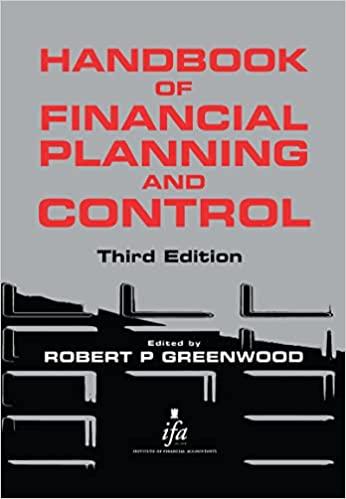Question
You are trying to plan for retirement in 10 years, and currently, you have $180,000 in a savings account and $300,000 in stocks. In addition,
You are trying to plan for retirement in 10 years, and currently, you have $180,000 in a savings account and $300,000 in stocks. In addition, you plan to deposit $16,000 per year into your savings account at the end of each of the 5 next years, and then $18,000 per year at the end of each year for the final years until you retire.
a.Assuming your savings account returns 9 percent compounded annually, and your investment in stocks will return 13 percent compounded annually, how much will you have at the end of 10 years? (Ignore taxes.)
b.If you expect to live for 20 years after you retire, and at retirement, you deposit all of your savings into a bank account paying 12 percent, how much can you withdraw each year after you retire (making 20 equal withdrawals beginning one year after you retire) so that you end up with a zero-balance at death?\

Step by Step Solution
There are 3 Steps involved in it
Step: 1

Get Instant Access to Expert-Tailored Solutions
See step-by-step solutions with expert insights and AI powered tools for academic success
Step: 2

Step: 3

Ace Your Homework with AI
Get the answers you need in no time with our AI-driven, step-by-step assistance
Get Started


